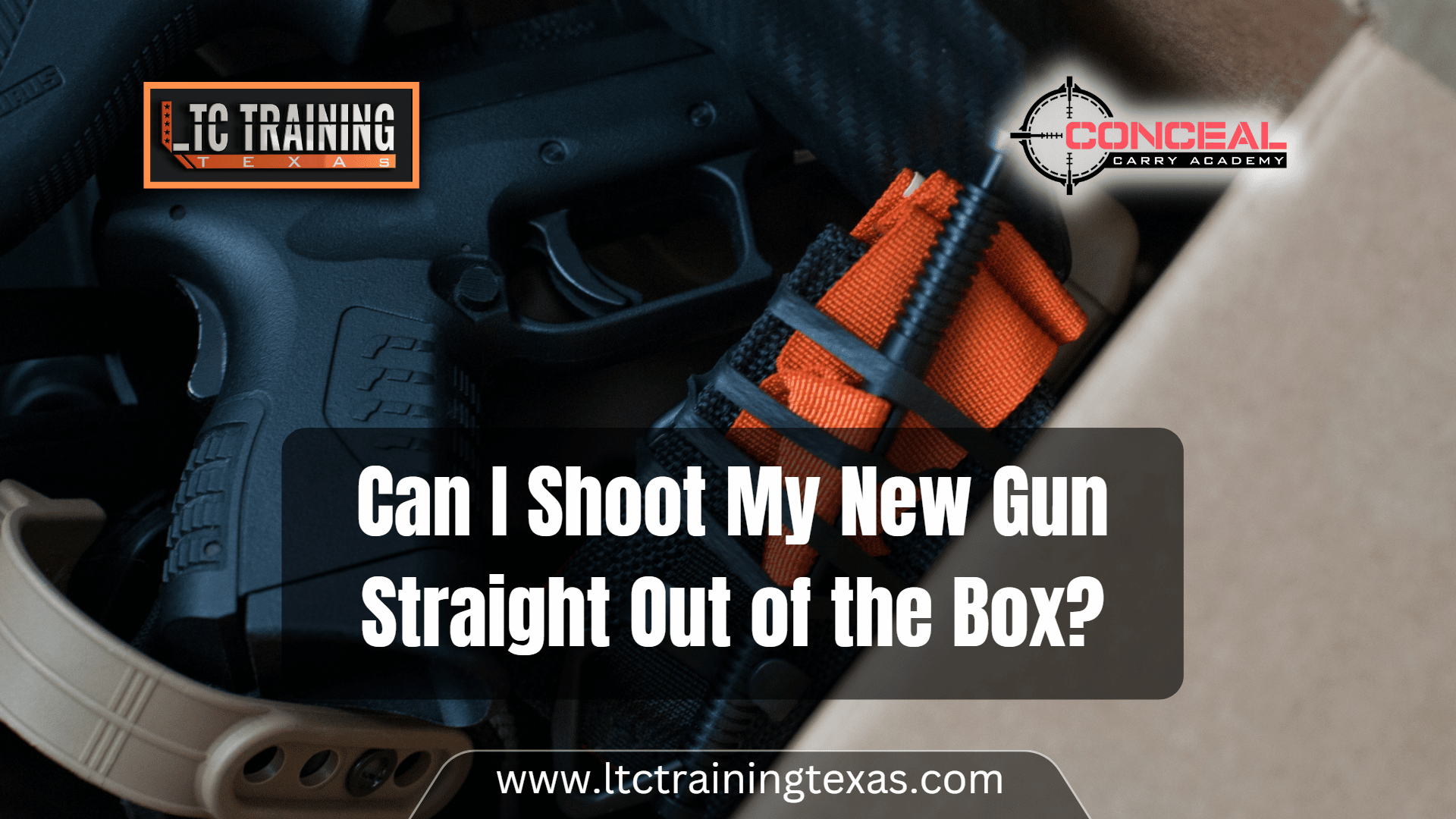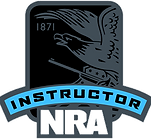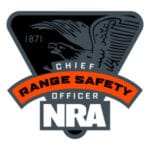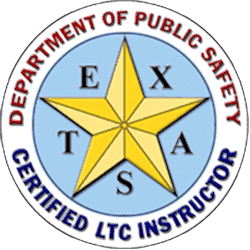Can I Shoot My New Gun Straight Out of the Box? Everything You Need to Know Before Firing
That feeling of holding your brand new gun for the first time is unbeatable. It's like welcoming a powerful new tool into your collection, and the urge to take it straight to the range and unleash some lead is natural. But hold your horses, partner! Before you fire off that first round, there are a few crucial things to consider.
This comprehensive guide will answer all your burning questions about whether you can shoot your new gun straight out of the box. We'll explore the different scenarios, the importance of proper cleaning (and how to do it safely!), and some essential safety reminders before you hit the range.
By the end of this post, you'll be armed with the knowledge (and confidence) to make an informed decision about firing your new gun and ensure a safe and enjoyable shooting experience.
Understanding New Gun Readiness: Factory Fresh vs. Field Ready
Imagine your new gun as a brand new car. You wouldn't dream of taking it for a spin without checking the fluids and making sure everything is in top condition, right? The same principle applies to firearms.
Fresh from the Factory: What to Expect
When you pick up your new gun from the dealer, it's most likely in a state we can call "factory fresh." This means it's been meticulously crafted and assembled by the manufacturer, but to protect it during shipping and storage, it might be coated with a few things you don't necessarily want on your gun when you fire it:
- Anti-corrosion coatings: These coatings prevent rust and corrosion during transport and storage. While great for keeping your gun in pristine condition in the box, they can attract dirt and debris and potentially hinder smooth operation when firing.
- Packing materials: Some manufacturers might use packing grease or oils to further protect the gun's metal parts. Again, these are excellent for short-term storage but not ideal for live fire.
Here's the key takeaway: New guns are generally not cleaned and lubricated for immediate shooting. This might seem counterintuitive, but manufacturers prioritize ensuring your gun arrives in perfect condition over immediate firing readiness.
Field Ready Exceptions
There can be exceptions to this rule. Some manufacturers, particularly for specific models, might ship their guns in a "field-ready" state, meaning they are pre-cleaned and lubricated for immediate use.
So, how do you know if your new gun is ready to shoot out of the box?
The answer is simple: Always refer to the owner's manual! This trusty booklet that comes with your gun will have specific instructions on whether your model requires cleaning before firing. It will also detail the proper cleaning procedures and recommended lubricants for your specific firearm.
Remember: The owner's manual is your gun's bible. Don't skip this crucial step – it can save you a lot of frustration (and potential malfunctions) down the range!
Why Cleaning Your New Gun Might Be Necessary (Even if Optional)
While the manufacturer's instructions are the ultimate authority, there are some compelling reasons why cleaning your new gun before its first outing might be a good idea, even if it's not strictly mandatory.
Benefits of a Pre-Shooting Clean
- Removes Packing Materials and Contaminants: As mentioned earlier, those anti-corrosion coatings and packing materials can attract dirt and debris. Cleaning ensures a smooth operation by removing any potential obstructions that could hinder the firing mechanism or jam the gun.
- Familiarizes You with Your Gun's Parts: Disassembling and cleaning your new gun is a fantastic way to get acquainted with its internal components. This knowledge will be invaluable for future cleaning and maintenance, allowing you to identify any potential problems early on.
- Allows for Proper Lubrication: The packing grease or oils used for storage might not be the ideal lubricants for firing your gun. Cleaning allows you to apply the correct lubricants recommended by the manufacturer, ensuring proper function and reducing wear and tear on the moving parts.
Think of it like this: Cleaning your new gun is a form of preventative maintenance. It takes a little extra time upfront, but it can save you from malfunctions, frustration, and potentially even costly repairs down the road.
Safety Considerations of Skipping the Clean
On the other hand, there can be consequences to skipping the cleaning process before firing your new gun:
- Packing Materials Can Cause Jams: Remember those anti-corrosion coatings and packing materials? If not removed, they can build up in the firing mechanism and cause jams or malfunctions during shooting. This can be not only frustrating but also potentially dangerous.
- Improper Lubrication Increases Wear and Tear: Without proper lubrication, the metal parts of your gun will rub against each other more intensely, leading to increased wear and tear. This can shorten the lifespan of your firearm and potentially impact its accuracy over time.
By taking the time to properly clean and lubricate your new gun before firing, you're ensuring its optimal performance, safety, and longevity.
How to Clean Your New Gun Before Shooting (Basic Steps)
Now that we've established the benefits (and potential drawbacks) of cleaning your new gun before hitting the range, let's delve into the actual process. Here's a breakdown of the basic steps involved:
Safety First!
This cannot be stressed enough. Before you even think about disassembly or cleaning, make sure your gun is completely unloaded and following all safe gun handling practices. Here are some key safety reminders:
- Double and triple-check that the chamber is empty. This means visually inspecting the chamber and running a cleaning rod through it to ensure no cartridge is lodged inside.
- Keep your finger off the trigger until you're ready to fire. This is a fundamental safety rule that applies to all situations, not just cleaning.
- Point the gun in a safe direction. This means a clear direction with no people or objects behind it.
Gather Your Cleaning Supplies:
For a basic cleaning, you'll need a few essential items:
- Cleaning rod: This long, thin rod is used to push patches and brushes through the barrel. Make sure it's the correct caliber for your gun.
- Solvent: This cleaning solution helps remove fouling, powder residue, and other debris from the barrel and other gun parts. Choose a solvent specifically designed for firearms.
- Patches: These small pieces of fabric are used with the cleaning rod to scrub the inside of the barrel. Opt for patches made from a non-abrasive material like cotton or flannel, and get them in the correct caliber for your gun.
- Lubricant: This oil helps reduce friction between moving parts and prevent rust. Use a lubricant specifically designed for firearms and recommended by your gun's manufacturer.
- Cleaning brush (optional): A bronze or nylon brush attached to the cleaning rod can be helpful for scrubbing stubborn grime in the barrel.
- Cleaning jag (optional): This small attachment holds the cleaning patch securely on the cleaning rod.
Following the Manufacturer's Guide is Crucial
While we can provide a general overview of the cleaning process, it's important to remember that every gun is different. Disassembly procedures can vary depending on the model and manufacturer.
Here's why the owner's manual is your best friend:
- It will provide step-by-step instructions on how to safely disassemble your specific gun for cleaning.
- It will detail the proper cleaning procedures for each gun part, including the barrel, chamber, slide/frame (depending on the gun type), and other components.
- It will recommend the specific types and amounts of cleaning solvent and lubricant to use for optimal results.
Disassembly can seem daunting, especially for new gun owners. Here are some tips:
- Find a clean, well-lit workspace with a flat surface.
- Lay out all your cleaning supplies within easy reach.
- Take your time and follow the instructions in the manual meticulously. Don't force anything, and if you get stuck, consult a gunsmith or a trusted, experienced gun owner for guidance.
We'll cover alternatives to cleaning your new gun yourself in the next section, but for now, remember: the owner's manual is your roadmap to a successful and safe cleaning process.
Alternatives to Cleaning Yourself: Professional Help or Learning Resources
Let's face it, disassembling and cleaning a firearm can feel intimidating, especially for those unfamiliar with their specific model. If you're not comfortable tackling the cleaning process yourself, there are a couple of alternatives to consider:
Taking Your New Gun to a Gunsmith for Cleaning and Inspection
A gunsmith is a qualified professional trained in the care and maintenance of firearms. They can provide a thorough cleaning and inspection of your new gun, ensuring it's properly lubricated and ready to fire safely and reliably.
Benefits of Using a Gunsmith:
- Peace of mind: Having a professional clean and inspect your new gun can give you peace of mind, knowing it's in top condition for safe shooting.
- Expert advice: Gunsmiths can offer valuable tips on proper cleaning techniques, maintenance routines, and specific recommendations for your firearm.
- Identifying potential issues: During the cleaning process, a gunsmith might identify any minor defects or potential problems with your gun that you might have missed.
Learning Resources for Safe and Effective Gun Cleaning
If you'd prefer to learn how to clean your gun yourself but want some additional guidance before diving in, there are a wealth of resources available:
- Online tutorials and videos: Reputable gun websites and YouTube channels offer detailed video tutorials on cleaning specific gun models. Look for channels with qualified instructors who prioritize safety and proper cleaning techniques.
- Gun safety classes: Many gun safety classes offered at shooting ranges or gun clubs include basic cleaning procedures in their curriculum. This can be a great way to gain hands-on experience under the guidance of a certified instructor.
Whichever route you choose, remember: Safety is paramount. Always prioritize safe gun handling practices, and if you're unsure about any step in the cleaning process, don't hesitate to seek help from a professional.
Beyond Cleaning: Other Considerations Before Shooting Your New Gun
Cleaning your new gun is an important step, but it's not the only thing to consider before hitting the range. Here are some additional factors to keep in mind:
The Importance of the Owner's Manual: Revisited
We've emphasized the importance of the owner's manual throughout this guide, and for good reason. This booklet is packed with valuable information beyond just cleaning instructions. It should be your go-to resource for:
- Safety instructions: The manual will outline safe handling procedures for your specific firearm, including loading, unloading, clearing malfunctions, and proper storage.
- Operation procedures: It will detail how to operate the various controls on your gun, such as the safety mechanism, magazine release, and slide (if applicable).
- Maintenance recommendations: The manual will provide guidelines for regular cleaning and maintenance beyond the initial cleaning process. This might include details on lubrication schedules, recommended replacement parts, and proper storage procedures.
Safe Gun Handling at All Times
Regardless of whether you clean your new gun yourself or take it to a professional, safe gun handling is crucial. Here's a quick refresher on some essential safety practices:
- Always keep your finger off the trigger until you're ready to fire. This is the most important rule of gun safety. It prevents accidental discharges that can lead to serious injury.
- Maintain proper muzzle awareness. Always be aware of where the muzzle (the business end) of your gun is pointing. Never point it at anything you don't intend to shoot, even if you think the gun is unloaded.
- Treat every gun as if it's loaded. This means following safe gun handling procedures even when you believe the gun is empty.
- Never rely on the safety mechanism alone. Safeties can malfunction, so treat your gun with respect even when the safety is engaged.
- Be aware of your surroundings and target. Make sure there are no people or objects behind your target before firing.
By following these safe gun handling practices, you can ensure a safe and enjoyable shooting experience for yourself and those around you.
Remember, safety is not something to take lightly. If you're ever unsure about any aspect of gun handling or operation, err on the side of caution and seek guidance from a qualified instructor.
Conclusion: Making an Informed Decision About Shooting Your New Gun
We've covered a lot of ground in this comprehensive guide! By now, you should have a clear understanding of whether you can shoot your new gun straight out of the box, the importance of proper cleaning (and how to do it safely!), and some essential safety reminders before you hit the range.
Here's a quick recap of the key takeaways:
- Refer to the owner's manual! It's the ultimate authority on whether your specific gun model requires cleaning before firing and will provide crucial information on safe operation and maintenance.
- Cleaning your new gun before shooting offers several benefits: It removes packing materials, familiarizes you with the parts, and allows for proper lubrication.
- Skipping the cleaning process can lead to jams and increased wear and tear.
- If you're not comfortable cleaning your gun yourself, consider taking it to a gunsmith or utilizing online resources and safety classes to learn proper techniques.
- Safety is paramount! Always prioritize safe gun handling practices and never hesitate to seek help from a qualified instructor if you're unsure about anything.
Now that you're armed with this knowledge, you can make an informed decision about shooting your new gun. Remember, responsible gun ownership starts with proper care and handling of your firearm. By following the tips and information outlined in this guide, you can ensure a safe and enjoyable shooting experience for yourself and those around you.
Happy (and safe) shooting!
When you’re ready to get your Texas License to Carry (LTC) or your Oklahoma SDA, make sure you choose a premier training provider. Conceal Carry Academy is committed to offering the best firearms training possible. When they need information on firearms safety or want to take a Texas LTC class or Oklahoma SDA, gun owners trust the expertise of the pros at Conceal Carry Academy. If you have questions about any aspect of gun ownership in Texas, contact us today!















